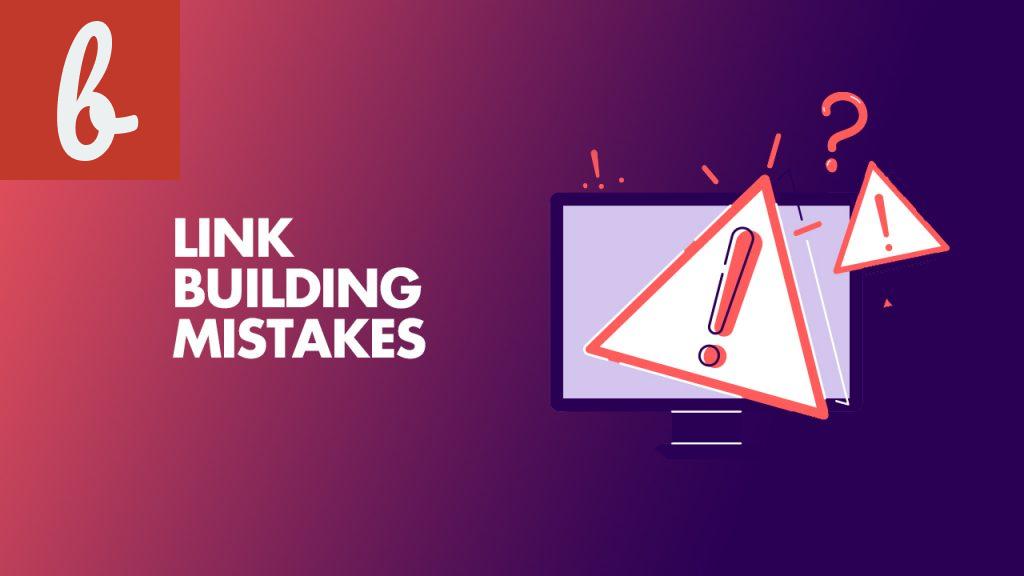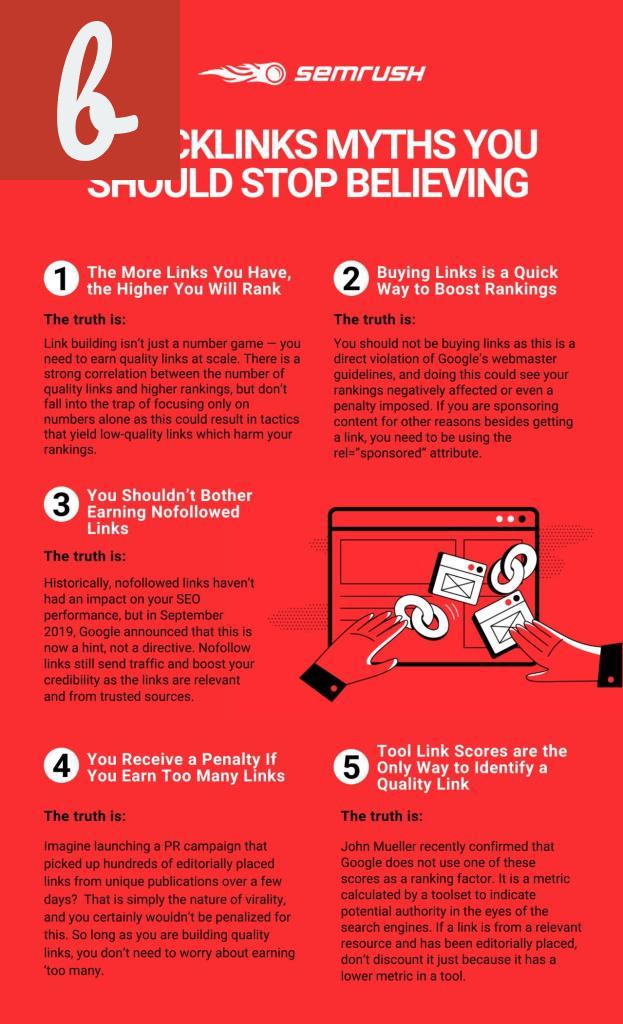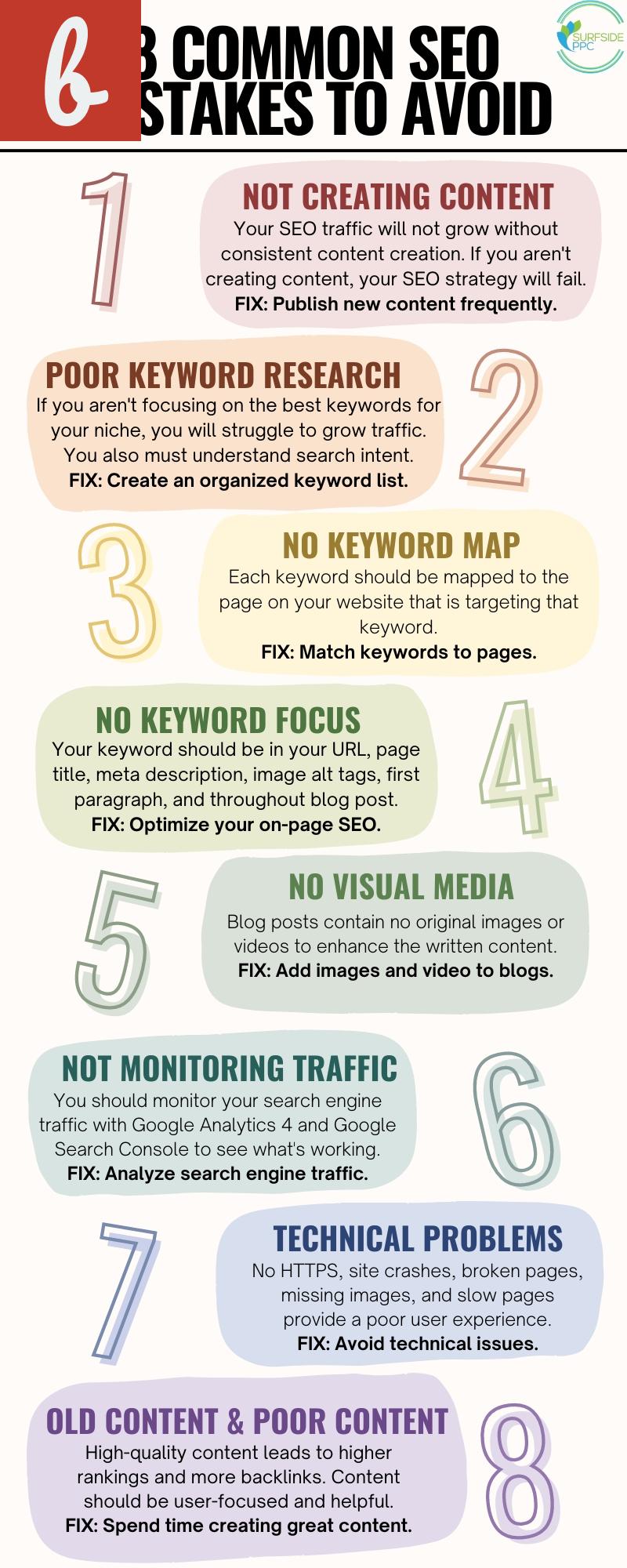5 Key Mistakes to Avoid When Utilizing a Backlink Indexer
Backlinks are an important aspect of search engine optimization (SEO), as they help to improve your website's ranking on search engine results pages. One way to track and manage your backlinks effectively is by using a backlink indexer. However, there are certain mistakes that you should avoid when utilizing a backlink indexer to ensure the best possible results for your website.
Mistake #1: Relying Solely on a Backlink Indexer
While a backlink indexer can be a valuable tool, it is important to remember that it should not be your only method of tracking and managing backlinks. Backlink indexers often have limitations and may not index all of your backlinks accurately. It is crucial to combine the use of a backlink indexer with other methods, such as manual monitoring and analysis, to get a comprehensive view of your backlink profile.
Mistake #2: Not Verifying the Quality of Backlinks
Using a backlink indexer does not guarantee that all the indexed backlinks are of high quality. It is essential to verify the quality of the backlinks before considering them as valuable assets. Low-quality or spammy backlinks can harm your website's ranking and reputation. Take the time to analyze each backlink and assess its relevance, authority, and trustworthiness.
- Check the authority and trustworthiness of the linking domain.
- Ensure that the anchor text and surrounding content are relevant to your website.
Mistake #3: Ignoring Backlink Removal or Disavowal
When utilizing a backlink indexer, it is crucial to keep an eye out for any toxic or harmful backlinks. These backlinks can negatively impact your website's SEO efforts. If you spot any low-quality or spammy backlinks, it is essential to take action and consider removing or disavowing them. Ignoring these harmful backlinks can lead to penalties from search engines.
Mistake #4: Only Focusing on Quantity Rather Than Quality
A common mistake when using a backlink indexer is solely focusing on the quantity of backlinks rather than their quality. While having a large number of backlinks may initially seem beneficial, it is the quality and relevance of those backlinks that truly matter. Instead of aiming for a high volume of backlinks, prioritize obtaining high-quality backlinks from authoritative and relevant sources.
Mistake #5: Not Monitoring and Updating
Lastly, it is important to continuously monitor and update your backlink profile. Backlink indexing can be an ongoing process, as new backlinks are constantly being created and existing ones might become inactive or irrelevant over time. Regularly check your backlink indexer to ensure that new backlinks are being indexed and that any outdated or broken links are addressed.
In conclusion, utilizing a backlink indexer can be a beneficial strategy for managing and tracking your backlinks. However, it is important to avoid these key mistakes to ensure the best possible results for your website's SEO efforts. By combining the use of a backlink indexer with other methods, verifying backlink quality, removing harmful backlinks, prioritizing quality over quantity, and continuously monitoring and updating your backlink profile, you can optimize your backlink strategy and improve your website's ranking on search engines.
Main Title: Common Errors to Steer Clear of When Using a Backlink Indexer
When it comes to improving your website's visibility and search engine rankings, utilizing a backlink indexer can be a valuable tool. However, there are common errors that website owners often make when using a backlink indexer that can harm their SEO efforts. In this article, we will discuss these errors and provide tips on how to avoid them.
One of the most common errors is relying solely on a backlink indexer to build backlinks. While these tools can help in discovering and indexing backlinks, it is essential to note that they should be used as a supplementary tool, not as the only method for acquiring backlinks. It is crucial to incorporate other backlink-building strategies like guest posting, outreach, and creating valuable content to diversify your link profile.
- List item 1: Avoid relying solely on a backlink indexer for building backlinks.
- List item 2: Diversify your backlink-building strategies by incorporating tactics like guest posting and outreach.
Another mistake is assuming that all backlinks are of equal value. Not all backlinks are created equal. Some backlinks carry more weight and authority than others. It is important to focus on acquiring high-quality backlinks from reputable websites within your industry. A backlink indexer can help you discover new backlinks, but it is up to you to assess their value and relevance to your website. Quality over quantity should be your guiding principle when it comes to building a strong backlink profile.
Furthermore, neglecting the use of anchor text is a common mistake made by website owners. Anchor text is the clickable text within a hyperlink. It is crucial to optimize anchor text with relevant keywords. By using targeted keywords as anchor text, you can signal search engines about the content of the linked page. However, it is important to maintain a natural balance and not overuse keywords in anchor text, as it can be seen as spammy and negatively impact your SEO efforts.
To summarize, here are the key points to remember:
- Avoid relying solely on a backlink indexer for building backlinks.
- Diversify your backlink-building strategies by incorporating tactics like guest posting and outreach.
- Focus on acquiring high-quality backlinks from reputable websites.
- Optimize anchor text with relevant keywords for improved SEO results.
By avoiding these common errors when using a backlink indexer, you can maximize the effectiveness of this valuable tool and enhance your website's visibility in search engine results.
Main Title: Mistakes You Shouldn't Make While Using a Backlink Indexer
When it comes to optimizing your website's search engine rankings, backlinks play a crucial role. Backlinks serve as a vote of confidence from other websites, signaling to search engines that your content is reliable and authoritative. To ensure that your backlinks have the desired impact, many website owners turn to backlink indexers. These tools help you monitor your backlinks and ensure that search engines recognize them. However, there are certain mistakes you should avoid while using a backlink indexer to maximize its benefits.
One of the most common mistakes people make is not utilizing a diverse range of anchor texts. Anchor texts are the clickable words or phrases that link to your website. Using the same anchor text for all your backlinks can look unnatural to search engines and may result in penalties. Instead, vary your anchor text using relevant keywords and synonyms to create a more organic linking profile.
- List item 1: Avoid having too many low-quality backlinks. While quantity can be tempting, the quality of your backlinks matters more than the sheer number. Search engines are becoming increasingly sophisticated in distinguishing between valuable and spammy backlinks. Focus on obtaining high-quality backlinks from reputable websites to maintain your website's credibility.
- List item 2: Neglecting to regularly check for broken backlinks is another mistake to avoid. Over time, websites may change their content or remove pages, leading to broken backlinks. These broken backlinks can negatively impact your website's rankings. By regularly using a backlink indexer, you can identify and fix any broken backlinks, ensuring a positive user experience and maintaining your website's authority.
Additionally, relying solely on a backlink indexer without actively building new backlinks is another misstep. While a backlink indexer is a useful tool, it doesn't replace the need for actively acquiring new backlinks. Consistently creating high-quality content and promoting it through various channels can help attract organic backlinks naturally, boosting your website's search engine rankings.
In conclusion, using a backlink indexer is a valuable strategy for monitoring and maintaining your website's backlinks. To make the most of this tool, avoid mistakes such as using the same anchor text for all backlinks, accumulating low-quality backlinks, neglecting broken backlinks, and solely relying on the indexer for backlink acquisition. By avoiding these errors and employing a well-rounded backlink strategy, you can maximize the benefits of backlinks and improve your website's search engine rankings.

Top Mistakes to Avoid When Leveraging a Backlink Indexer
When it comes to improving your website's search engine rankings, backlinks play a crucial role. Backlinks are links from other websites that direct users to your site, and search engines consider them as an important factor in determining the credibility and authority of your web pages. This is where a backlink indexer proves to be extremely useful. A backlink indexer helps search engines discover and index the backlinks pointing to your site, ultimately boosting your website's visibility in search results.
However, not everyone utilizes a backlink indexer effectively, which can lead to subpar results. To ensure you make the most out of this powerful tool, here are some top mistakes to avoid when leveraging a backlink indexer:
- 1. Relying solely on quantity over quality: While it's important to have a large number of backlinks, it's equally crucial to focus on the quality of those backlinks. A common mistake many make is obtaining a large quantity of low-quality backlinks with the hope of boosting their rankings. However, search engines prioritize quality over quantity. Instead, focus on acquiring high-quality backlinks from authoritative sources that are relevant to your niche. A backlink indexer can help you identify these valuable backlinks and ensure they are indexed properly.
- 2. Neglecting to regularly update and monitor backlinks: Backlinks can change over time. Websites you were once linked to may no longer exist or may have removed the link to your site. It's important to regularly monitor and update your backlinks to ensure they are live and functioning. By leveraging a backlink indexer, you can easily identify any broken or lost backlinks and take appropriate action, such as reaching out to the website owner to restore the link or finding alternative linking opportunities.
3. Failing to diversify anchor text: Anchor text is the clickable text within a hyperlink. It's important to diversify your anchor text to make it appear natural to search engines. Using the same anchor text repeatedly can raise red flags and potentially harm your search engine rankings. A backlink indexer can help you analyze and vary your anchor text to optimize its impact and improve your website's visibility.
In conclusion, a backlink indexer is a powerful tool that can significantly enhance your website's search engine rankings. However, avoiding the aforementioned mistakes is crucial to ensuring you maximize its benefits. By focusing on quality over quantity, regularly monitoring and updating your backlinks, and diversifying your anchor text, you'll be well on your way to leveraging a backlink indexer successfully and boosting your website's visibility.
Avoid These Common Pitfalls When Using a Backlink Indexer
Backlink indexers are valuable tools for improving your website's search engine optimization (SEO) efforts. They help you keep track of and analyze the backlinks pointing to your site, ultimately boosting your website's ranking on search engine results pages. However, just like any tool, there are pitfalls to watch out for when using a backlink indexer. Here are some common mistakes to avoid:
1. Relying solely on a single backlink indexer:
While it may be tempting to stick to one backlink indexer, it's essential to diversify and use multiple tools. Each tool has different features and algorithms, so relying on just one may limit your ability to analyze your backlink profile comprehensively. Using a combination of various indexers will provide a more accurate and complete picture of your backlink profile.
2. Neglecting to update your index:
Backlink profiles are dynamic and constantly changing. New backlinks are added, and old ones may become irrelevant or broken. It's crucial to regularly update your index to ensure the accuracy of the data. Failure to update your index could lead to incorrect analysis and misguided SEO efforts.
3. Not prioritizing quality over quantity:
It's easy to get caught up in the number of backlinks pointing to your site. However, quality is far more important than quantity when it comes to backlinks. A single authoritative backlink from a reputable website holds more value than numerous low-quality backlinks. Make sure your backlink indexer allows you to filter and analyze the quality of your backlinks, enabling you to focus on building a strong and relevant backlink profile.
- List item 1: Regularly monitor your backlink profile
- List item 2: Ensure the index covers a wide range of sources
4. Failing to analyze anchor text diversity:
Anchor text refers to the clickable text within a hyperlink. It's important to have a diverse and natural anchor text profile, as it helps search engines understand the relevance and context of your website. Use your backlink indexer to analyze the anchor text diversity and make adjustments if necessary. Avoid over-optimization by diversifying your anchor text with relevant keywords and natural language.
5. Ignoring competitor analysis:
Competitor analysis is an integral part of any SEO strategy. Your backlink indexer can also help you analyze your competitors' backlink profiles. By studying their strategies, you can identify new opportunities, learn from their successes, and uncover potential weaknesses. Ignoring competitor analysis means missing out on valuable insights that could give you an edge in your SEO efforts.
In conclusion, a backlink indexer can be a powerful tool in your SEO arsenal. However, it's essential to avoid these common pitfalls to ensure accurate analysis and effective optimization. By diversifying your tools, updating your index regularly, prioritizing quality over quantity, analyzing anchor text diversity, and conducting competitor analysis, you'll be well on your way to improving your website's backlink profile and overall SEO performance.




Comments on "Common Mistakes To Avoid When Using A Backlink Indexer "
No comment found!